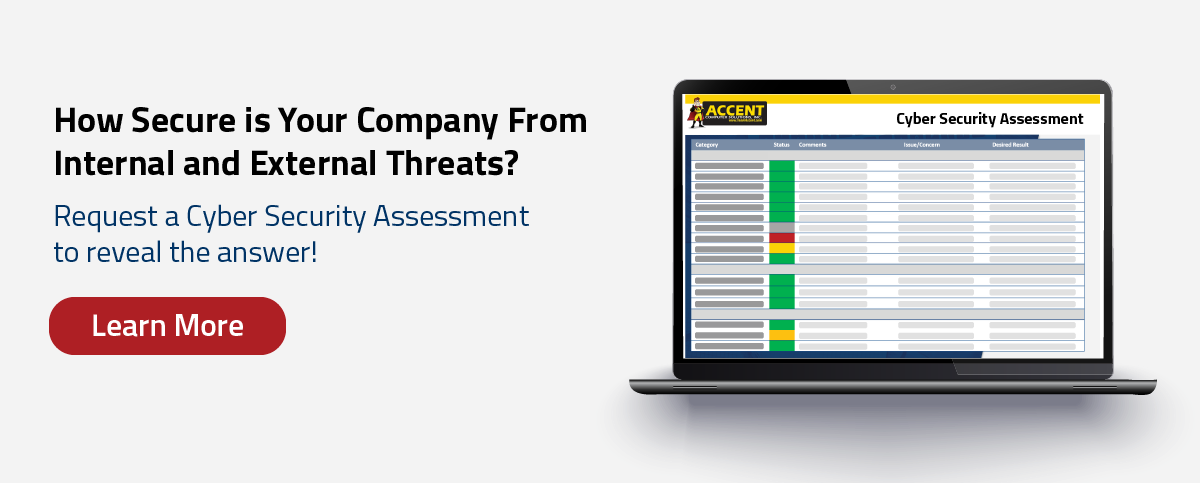I got a call from a client recently asking, “Why are emails from my customers getting caught in my spam filter instead of sent to my inbox?”
Fair question.
The emails he was referencing were from a customer that he communicates with all the time. And to make matters worse, he didn’t even know the emails had been sent until a customer called to ask why he hadn’t been responding.
He was understandably frustrated.
The thing is, this problem is not unique to him – real emails get stuck in spam all the time. Why? There are many factors, but a lot of it has to do with spam filtering settings.
Here’s a simple overview of the complex world of spam filtering.
What is Spam?
We can’t talk about spam filtering without first defining spam.
According to the Federal Trade Commission, spam is “unwanted commercial email.” Vague, right?
Spam could be anything from legitimate companies trying to interest you in their services, to hackers sending messages in bulk, hoping you’ll click on one of their malicious links or attachments.
What is a Spam Filter and How Does it Work?
There’s quite a bit going on behind the scenes before an email shows up in your inbox.
Spam filters are designed to block dangerous emails. They review every message sent to your email address, give it a grade, and decide whether it should be blocked, delivered, or quarantined (held for you to decide).
As you can imagine, detecting the difference between a real customer email and an “unwanted commercial email” can be tricky for a software program. It’s a fine line.
Luckily these programs are smart, and they do a great job most of the time.
Dangerous spam emails typically have common signs, such as the country it was sent from or how the message was formatted. Spam filters look for those types of known signs and patterns to grade the messages.
Unfortunately, sometimes legitimate emails share some of these suspicious properties. It could be anything from how the sender formatted their email signature, to how their email system is configured to send messages.
The Best Way to Get the Emails You Want (and Block the Ones You Don’t)
Your IT support team can adjust how strict or lax the spam filtering rules are – but it’s a delicate balance. Make it too strict and you’ll filter out a lot of legitimate email; make it too lax and you’ll get way more junk in your inbox.
The reality is, it’s impossible to filter out EVERY unwanted email without occasionally blocking legitimate ones as well.
And on the flip side, sometimes unwanted marketing emails will land in your inbox. These could be from companies where you accidentally checked the “send me company updates” button, or they could be complete strangers who purchased a list with your email address on it.
Either way, if they don’t show signs of ill-intent, they’ll probably make it to your inbox.
Why Do I Still Get Spam Emails Even Though I Have A Spam Filter?
As much as we’d like to block everything bad, hackers and scammers are clever. They’re constantly thinking up new ways to get around spam filters – just as fast, if not faster than spam filter developers can come up with new ways to block spam.
We’re fighting an uphill battle.
A Few Things You Can Do to Help Your Spam Filter Know Which Emails You Do (and Don’t) Want:
1. Review Your Spam Quarantine
When the spam filter sees something that looks questionable, it holds it in quarantine so you can safely review it. As you’re sorting through your quarantined messages, be sure to click the “spam” or “not spam” buttons. Spam filters use those buttons to continuously learn what’s acceptable and what’s not.
2. Let Your IT Support Team Know When You’re Getting Messages You Don’t Want
As I mentioned before, blocking ALL spam is not realistic, but your IT team will gladly blacklist, or permanently block, a sender on your behalf.
They’ll also help make sure your settings are as tight as you’d like them to be.
3. Tell Your IT Support Team When Real Messages Aren't Being Delivered
You could whitelist that email address – meaning, tell your spam filter that those messages should always be allowed into your inbox – but that has some risks.
Instead, your IT team will dig into the message to see exactly why it’s getting stuck. Once they know, they can fix the real issue, or notify the sender if the problem is on their end. You’ll be doing them a favor since you’re probably not the only one having this issue with their emails.
Doing it this way instead of whitelisting protects you if the sender’s email account or server ever gets compromised.
4. Last Resort: Whitelist Specific Email Addresses
Whitelisting tells the spam filter which addresses should always be allowed into your inbox. This should be used sparingly, however, since you don’t want to be TOO trusting of an IT environment that’s out of your control.
As frustrating as it is to get too much spam, or to have real emails blocked, spam filters are unsung heroes. They’re a critical layer in cyber security protection, keeping you safe from millions of threats each day.
If you’re not sure if your company is as secure as it should be from cyber security threats, feel free to reach out to us at any time. We’re here to make your life easier through fast, friendly, frustration-free IT services.





